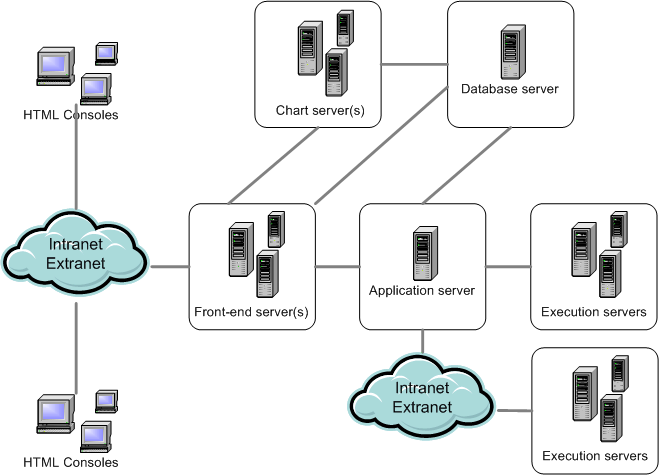Silk Performance Manager Architecture
The following sections describe the Performance Manager components.
Overview

Front-End Server
The front-end server is responsible for the graphical user interface. This server is based on HTML and is accessible from any Web browser, such as Internet Explorer or Firefox. A user sends an appropriate HTTP request to the front-end server and receives a login page for authentication. After successful login, the user can use the corresponding application based on the respective user rights. The front-end server can operate as a stand-alone HTTP server, or it can be attached to a Web server, such as IIS via ISAPI filter.
Application Server
The application server synchronizes tasks such as the distribution of schedules, control of execution servers, and management of database configuration. These tasks require a centralized agency to ensure the consistent, reliable behavior of the application. The application server also evaluates results, saves them to the database, and sends alerts based on success conditions.
Execution Server
The execution server executes automated tests that are scheduled by authorized users. Users are responsible for the proper configuration of execution servers and additional resources that are required for test executions. The system allows for the installation and configuration of multiple execution servers working independently of one another.
Chart Server
The chart server is used to generate charts that are viewed in reports. The system allows for the configuration of a pool of chart servers. A built-in load balancing mechanism uses the pool to distribute chart generation. The chart server is also used to generate reports and deliver them directly to the end-user for viewing within a browser.
Database Server
System persistency is implemented using a RDBMS (Relational Database Management System).